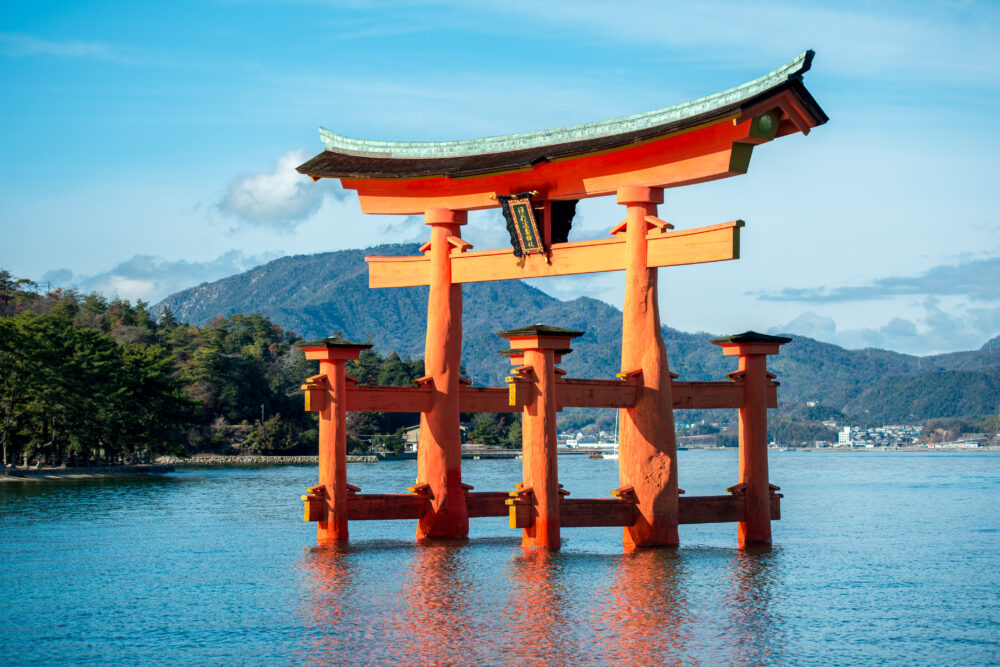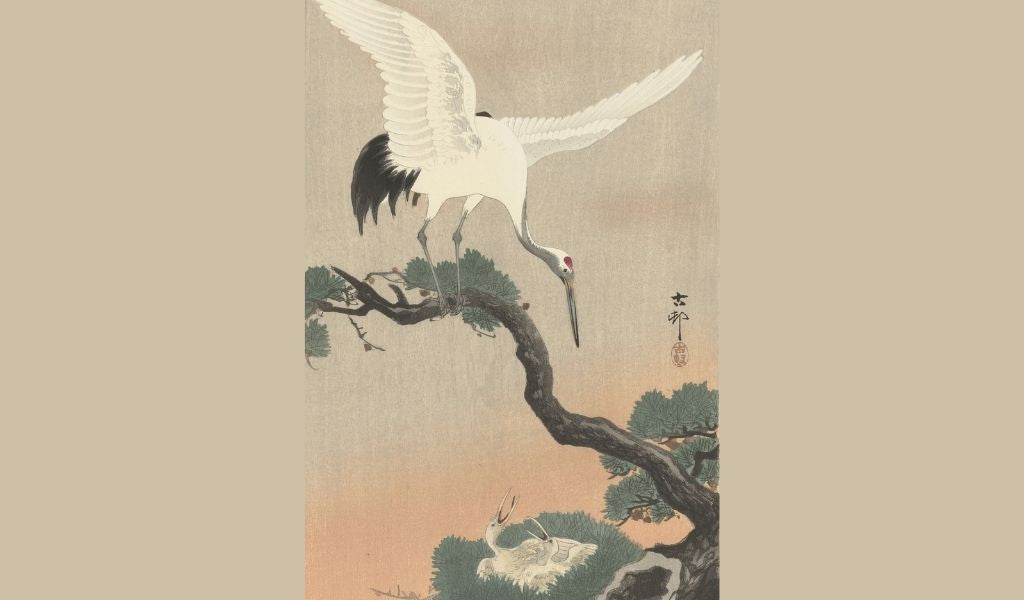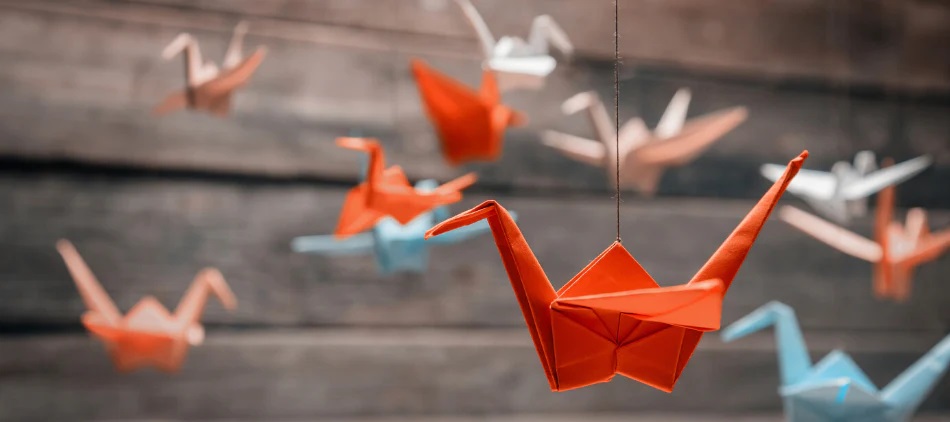While considering ideas for my upcycling project, I happened to come across some of my older journals from my earlier years as a freshman and sophomore in engineering. This gave me the idea to utilize some of these papers to create some sort of origami and the main idea that I am planning on doing right now is using cranes as they are an iconic piece of Japanese culture that has popularized its way into a respected art form. As such, I decided to go with a Shinto Japanese aesthetic which is a belief that revolves around the harmony and connection between nature and divinity. It includes the principles of kami which are gods that are believed to reside in everything including mountains and rivers. These kami are worshipped in shrines across Japan as this practice represents a sense of gratitude and respect for the natural world which is the foundation of the Shinto belief.

Shinto is the indigenous culture of Japan and is deeply ingrained into the culture and media of its home country as a result. The term Shinto is derived from a combination of two Chinese characters, “Shendao”, and means “Way of the Gods”. The term “Shen” represents “spirit” and “Dao” means “way”. This belief originated from early Japanese Buddhism but evolved to the modern day to signify the spiritual belief in the Kami at the end of the Edo period and surpassed the older Japanese state religion in the 20th century.
In Japan, the crane is symbolic of good fortune and longevity while being connected to the role that animals play in the Shinto belief. Within the realms of the Shinto belief, animals are seen as sacred messengers that act as intermediaries between humans and the divine which usually involves the Kami. The animalistic connection to the Shinto belief inspired me to incorporate some sort of animal into my upcycling project, but I was initially unsure about the animal nor the method to complete this project. As I was going to sleep for the night, I suddenly had an idea about using origami as the medium for this project and the crane as the form of the origami. It seemed like a perfect fit due to them originating from Japanese culture while still fitting the Shinto belief.

Another great influence on my upcycling project is the famous belief of the origami cranes that folding one thousand of these paper cranes can grant a wish or good fortune to the creator. This belief is known as Senbazuru and has deep roots in Japan as a symbol of hope. This belief gained popularity after a victim of the Hiroshima bombing, Sadako Sasaki, embarked on a journey to finish the set of one thousand cranes for a wish of better health after being diagnosed with Leukemia at a young age. She was unable to finish folding all one thousand origami cranes but her family continued to finish the rest of the cranes. Now, she stands as an inspiration for people around the world who come to visit her memorial and hang origami cranes. This story also very greatly inspired me to start my journey into making one thousand origami cranes. I will most likely be unable to finish one thousand origami cranes by the deadline of this project but this will remain a goal for the end of this summer due to its significance as my first summer free from my undergraduate status.

Sources:
1. https://www.japan-guide.com/e/e2056.html
2. https://en.wikipedia.org/wiki/Shinto#:~:text=A%20polytheistic%20and%20animistic%20religion,shrines%2C%20and%20jinja%20public%20shrines.
3. https://japanupclose.web-japan.org/techculture/c20230807_3.html
4. https://japan-avenue.com/blogs/japan/japanese-crane
Pictures:
1. https://en.wikipedia.org/wiki/Shinto
2. https://japan-avenue.com/blogs/japan/japanese-crane
3. https://japanupclose.web-japan.org/techculture/c20230807_3.html
Thumbnail:
https://www.rememberingalife.com/pages/folding-a-paper-crane


6 Comments. Leave new
I liked the depth you went into regarding the history and background of the aesthetic. It might be cool to create a spinning tornado of cranes by attaching them to a horizontal spinning wheel. I’m excited to see what the final product looks like!
Thanks for the comment Collin. That wheel idea seems like a cool idea! I have been thinking of doing some sort of decor with the cranes by tying them with strings like in the last image but I was not sure how to do it completely yet so maybe I can do sections of 2-3 cranes on a wheel.
Interesting use of old engineering notes, I think all of the equations and diagrams will look cool when used for origami. Are there going to be any more elements to your project other than the paper cranes? I think it would be cool if you made some sort of rig to hold all of them from the ceiling or something like that. Also are you gonna try to make 1000 of them? What size of crane are you going for? I also think this project is cool due to its connection to the Shinto Belief that you described.
I hope the colored pen notes show up and give the cranes an extra layer to its aesthetic so I am also crossing my fingers. Yeah, I wanted to add another element to my cranes which was to make it a decor piece similar to the last image, but I was not entirely sure yet. I also may incorporate more colored paper to give it some variety and pop in color.
To answer your first question, I do not know if I will be able to make 1000 cranes in time for this deadline since it takes me around 10-20 minutes per crane and I have to keep rewatching the video to follow the steps. Hopefully, I get good enough soon to just start making them in a few minutes.
For your second question, I was thinking of just using the standard paper size since that is the size of my notes which results in a palm-sized crane right now. Maybe, I can incorporate some differences in size to make it more interesting.
Definitely an interesting upcycle you’ve decided, especially giving purpose to your old journals that would’ve otherwise gathered dust. The delve into their history was intriguing as the only exposure I had with origami was through media and receiving money in the form of origami from relatives when I was younger. Given how far back origami has been around, it would be interesting to know another interpretation of origami aside from the Japanese crane.
And best of luck with the thousand cranes for the end of this summer.
Yeah I think it was a good idea to use the journals as they have just been sitting in my room for several years untouched and gathering up dust. For me, I had barely any exposure at all to origami and just remember making some simple origami turtles in my middle school days with some friends. So, this was a great way to learn more about the interesting background of origami. Maybe, it would be a good idea to weave some other animals into my origami. Also, thanks for the good wishes! I will try my best.